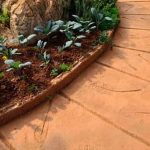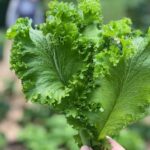Utah vegetable gardening tips are essential for anyone looking to start a successful garden in the state. With its unique climate and growing conditions, Utah presents both challenges and opportunities for vegetable growers. Understanding the specific needs of the region is crucial for cultivating a thriving garden.
When it comes to vegetable gardening in Utah, there are several factors to consider, from choosing the right vegetables for the climate to understanding the soil and growing conditions. This article will provide valuable insights and tips on how to start, maintain, and sustain a successful vegetable garden in Utah.
In this comprehensive guide, you will learn about selecting the best vegetables for Utah’s climate, managing the unique weather challenges, starting seeds indoors, planting and transplanting practices, essential maintenance and care tips, as well as harvesting and preserving your garden’s bounty. Whether you are a beginner or experienced gardener, this article will equip you with the knowledge and tools needed to create a thriving vegetable garden in Utah.
Choosing the Right Vegetables for Utah’s Climate
When it comes to vegetable gardening in Utah, choosing the right vegetables for the climate is crucial for a successful harvest. Utah’s climate is characterized by hot summers, cold winters, and low precipitation, making it important to select vegetables that can thrive in these conditions. Here are some key considerations when choosing the right vegetables for your Utah garden.
Heat-Tolerant Vegetables
Utah experiences scorching temperatures during the summer months, so it’s important to choose vegetables that can withstand the heat. Some heat-tolerant vegetables that do well in Utah include tomatoes, peppers, eggplant, okra, and melons. These vegetables thrive in warm weather and will produce a bountiful harvest despite the high temperatures.
Cold-Hardy Vegetables
In contrast to its hot summers, Utah also has cold winters with freezing temperatures. When selecting vegetables for your garden, consider cold-hardy varieties that can withstand frost and chilly weather. Some cold-hardy vegetables suitable for Utah’s climate include broccoli, cauliflower, cabbage, kale, carrots, beets, and Brussels sprouts. These vegetables can be planted early in the spring or late in the summer for a fall harvest.
Drought-Resistant Vegetables
Utah has low precipitation levels and often experiences drought conditions, especially during the summer. Therefore, it’s important to choose vegetables that are resilient to drought and require minimal water. Drought-resistant vegetables such as beans, corn, squash, and root crops like potatoes and sweet potatoes are well-suited for Utah’s arid climate. These vegetables have adapted to survive with less water and are excellent choices for a sustainable garden in Utah.
By carefully selecting heat-tolerant, cold-hardy, and drought-resistant vegetables for your garden in Utah’s climate you can ensure a successful harvest while conserving water and resources. Keeping these tips in mind will help you build a productive and thriving vegetable garden in Utah.
Understanding the Soil and Growing Conditions in Utah
When it comes to successful vegetable gardening in Utah, understanding the soil and growing conditions is crucial. Utah’s unique climate and geography present both challenges and opportunities for gardeners. With the right knowledge and preparation, you can create a thriving vegetable garden in the Beehive State.
Soil Composition
Utah’s soil composition varies greatly depending on the region. In general, Utah’s soil tends to be alkaline, which can affect the availability of nutrients to plants. Conducting a soil test is essential to determine the pH levels and nutrient content of your garden soil. Based on the results, you may need to amend your soil with organic matter or other additives to create an ideal growing environment for your vegetables.
Growing Conditions
Utah’s diverse climate means that different areas of the state experience varying growing conditions. For example, northern Utah has a shorter growing season due to its higher elevation, while southern Utah has a longer season but also deals with high temperatures. Understanding your specific region’s climate patterns will help you choose vegetables that are well-suited to thrive in those conditions.
Adapting to High Elevations
Utah is known for its high elevations, which can impact vegetable gardening. Higher elevations mean cooler temperatures and potentially shorter growing seasons. It’s important to select vegetable varieties that are more tolerant to these conditions and consider using methods such as season extenders (like row covers or hoop houses) to maximize your growing season.
By taking into account these factors, along with utilizing proper watering techniques and fertilization, you can adapt your gardening practices to best suit the soil and growing conditions in Utah. With careful planning and maintenance, you can overcome these challenges and cultivate a successful vegetable garden in the Beehive State.
Tips for Starting Seeds Indoors in Utah
Starting seeds indoors can be a great way to get a head start on your Utah vegetable garden. This is especially important in Utah, where the growing season can be shorter due to late spring frosts and early fall freezes. By starting your seeds indoors, you can ensure that your plants have a healthy head start and will be ready to transplant once the weather warms up.
When starting seeds indoors in Utah, it’s important to choose the right containers and soil. Use seed-starting trays or small pots filled with a high-quality potting mix that provides good drainage. This will help prevent issues with overwatering and damping off, which can be common problems when starting seeds indoors.
Another key tip for starting seeds indoors in Utah is to provide adequate light for your seedlings. Investing in a grow light or placing your seedlings in a sunny window can help ensure that they get the light they need to grow strong and healthy before being transplanted outdoors.
One more thing to consider when starting seeds indoors in Utah is to pay attention to timing. Make sure you know the average last frost date for your area and plan your indoor seed-starting accordingly. Some vegetables, like tomatoes and peppers, need more time to grow indoors before being transplanted outside, so it’s important to start these seeds early enough to give them ample time to mature before they are planted in the garden.
| Utah Vegetable Gardening Tips | Starting Seeds Indoors |
|---|---|
| Choose high-quality potting mix | Provide adequate light for seedlings |
| Pay attention to timing based on last frost date | Avoid overwatering with good drainage |
Best Practices for Planting and Transplanting in Utah
When it comes to planting and transplanting in Utah, it’s important to be mindful of the unique climate and growing conditions in the state. Proper planning and technique can make a big difference in the success of your vegetable garden. Here are some best practices for planting and transplanting in Utah:
- Choose the Right Time: Timing is crucial when it comes to planting and transplanting in Utah. The last frost date in the state varies depending on the region, so be sure to check with your local agricultural extension office for specific recommendations.
- Prepare the Soil: Utah soil can be alkaline and heavy in clay, which may require amending with organic matter such as compost or peat moss. It’s important to loosen the soil and remove any debris before planting or transplanting.
- Select Healthy Plants: When transplanting seedlings or purchasing plants from a nursery, look for healthy specimens with strong stems and vibrant leaves. Avoid plants that show signs of disease or pest damage.
Transplant shock is a real concern when moving plants from containers to the garden, so it’s important to take steps to minimize stress on the plants. Water them well before and after transplanting, and consider using shade cloth or row covers to protect them from intense sun or wind.
In addition, proper spacing is key when planting vegetables in Utah. Be sure to follow recommended spacing guidelines for each type of plant to ensure they have adequate room to grow. Taking these best practices into consideration will help set your vegetable garden up for success in Utah’s unique climate.
Dealing With Utah’s Unique Weather Challenges in Vegetable Gardening
When it comes to vegetable gardening in Utah, one of the biggest challenges that gardeners face is the unique weather conditions. From hot and dry summers to cold and snowy winters, Utah’s climate can be quite challenging for growing vegetables. However, with the right strategies and techniques, it is possible to overcome these challenges and have a successful vegetable garden. Here are some tips for dealing with Utah’s unique weather challenges in vegetable gardening:
- Choose Cold-Hardy Varieties: Select vegetable varieties that are well-suited for Utah’s climate. Look for cold-hardy vegetables that can tolerate frost and cooler temperatures, such as carrots, kale, spinach, and broccoli.
- Protect Against Heat: Utah’s hot and dry summers can take a toll on vegetable plants. To protect your plants from excessive heat, provide shade with row covers or shade cloth, water consistently, and mulch around the base of plants to retain moisture.
- Prepare for Frost: In Utah, late spring frosts and early fall frosts can pose a threat to tender vegetables. Be prepared to cover vulnerable plants with frost blankets or cloches to protect them from sudden drops in temperature.
In addition to these strategies, it is important to stay informed about the local weather patterns in your area so you can anticipate any extreme conditions that may affect your vegetable garden. By being proactive and taking steps to mitigate the impact of Utah’s unique weather challenges, you can increase the likelihood of success in your vegetable gardening endeavors.
Remember that by being vigilant about changing weather patterns throughout the year will help you anticipate any potential issues or threats to your crops. By preparing for all types of unique weather conditions in Utah each season brings forth will ensure you are better equipped at managing potential damage before it could become severe.
Essential Maintenance and Care for Utah Vegetable Gardens
Once your vegetable garden in Utah is planted, it does require regular maintenance to ensure a successful harvest. Here are some essential tips for maintaining and caring for your garden in the unique climate and growing conditions of Utah:
First, it is crucial to keep an eye on watering. Utah’s arid climate means that consistent irrigation is necessary for most vegetable plants. Installing a drip irrigation system can be an efficient way to ensure that your plants receive the water they need without wastage.
Second, weeding is another essential aspect of maintaining a healthy vegetable garden in Utah. Weeds not only compete with your vegetables for water and nutrients but also provide hiding places for pests. Regular weeding can help keep your garden healthy and productive.
Finally, staying vigilant against pests and diseases is vital in Utah’s vegetable gardening. Keep an eye out for common issues such as aphids, spider mites, and powdery mildew that tend to thrive in Utah’s dry climate.
Here are some additional tips to consider:
- Fertilize regularly
- Mulch to conserve moisture
- Stake tall or vining plants
| Maintenance Tip | Details |
|---|---|
| Watering | Install a drip irrigation system |
| Weeding | Regularly remove weeds from the garden |
| Pest Control | Stay vigilant against common pests and diseases |
Harvesting and Preserving Your Utah Garden’s Bounty
After months of hard work, your Utah vegetable garden is finally ready for harvest. The key to successful harvesting in Utah is timing. It’s crucial to know the optimal time to pick each type of vegetable to ensure maximum flavor and nutritional value. Keep a close eye on your garden and harvest your vegetables when they are at their peak ripeness.
When it comes to preserving the bounty from your Utah vegetable garden, there are several methods you can use. Canning, freezing, and pickling are popular options for preserving fruits and vegetables. Canning is a great way to preserve salsa, sauces, and jams while freezing works well for berries, peas, and corn. Pickling is a fantastic option for cucumbers, beets, and other root vegetables.
Another important aspect of preserving your Utah garden’s bounty is proper storage. For root vegetables like carrots and potatoes, a cool and dark storage area is essential to prevent spoiling. Leafy greens should be stored in the refrigerator with a damp towel to maintain freshness. Properly storing and preserving your harvested vegetables will ensure that you can enjoy them throughout the year.
In addition to traditional preserving methods, another way to make the most of your Utah garden’s bounty is by dehydrating certain fruits and vegetables. Dehydrating intensifies flavors and can extend the shelf life of items like tomatoes, apples, peppers, and herbs. By using various preservation techniques, you can savor the taste of your Utah-grown produce all year round.
Conclusion
In conclusion, sustaining a successful vegetable garden in Utah requires careful consideration of the state’s unique climate and growing conditions. By choosing the right vegetables that are well-suited to Utah’s environment, understanding the soil and adapting to the state’s weather challenges, gardeners can set themselves up for a fruitful and bountiful harvest.
When starting seeds indoors in Utah, it’s important to provide the proper care and attention to ensure strong and healthy seedlings. Additionally, best practices for planting and transplanting in Utah include timing your plantings according to the local climate and being mindful of potential late frosts.
To maintain a thriving vegetable garden in Utah, essential maintenance and care such as regular watering, fertilizing, and pest control are crucial. Furthermore, harvesting and preserving your garden’s bounty allows you to enjoy the fruits of your labor throughout the year.
By following these Utah vegetable gardening tips and staying attuned to the specific needs of plants in this region, gardeners can sustain successful vegetable gardens that yield an abundance of fresh produce. With dedication, knowledge, and a love for gardening, anyone can cultivate a flourishing vegetable garden in Utah.
Frequently Asked Questions
What Is the Easiest Vegetable to Grow in Utah?
The easiest vegetable to grow in Utah is probably the zucchini. It is a hardy plant that thrives in warm weather and produces an abundance of fruit with minimal effort. Its rapid growth also makes it a rewarding choice for beginners.
What Vegetables Should Not Be Planted Next To?
Certain vegetables should not be planted next to each other due to potential competition for resources or susceptibility to the same pests and diseases. For example, potatoes should not be planted near tomatoes, as they are both susceptible to similar diseases like blight. It’s important to research companion planting to avoid any potential issues.
How Do You Plan a Vegetable Garden for Beginners?
Planning a vegetable garden for beginners involves several key steps. First, choose a suitable location with plenty of sunlight and good soil drainage. Then, decide which vegetables you want to grow based on your preferences and the climate in your area.
Consider factors such as spacing, timing of planting, and proper care for each type of vegetable. Lastly, make sure to regularly water and maintain your garden as it grows.

If you’re looking to get into vegetable gardening, or are just looking for some tips on how to make your current garden better, then you’ve come to the right place! My name is Ethel and I have been gardening for years. In this blog, I’m going to share with you some of my best tips on how to create a successful vegetable garden.





